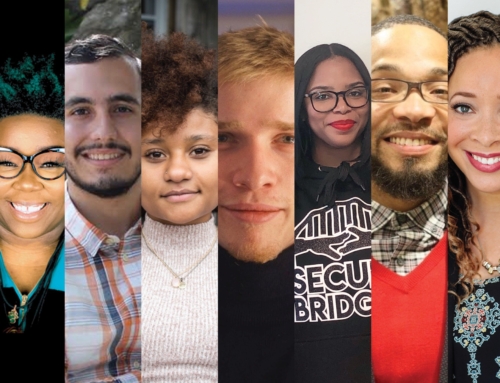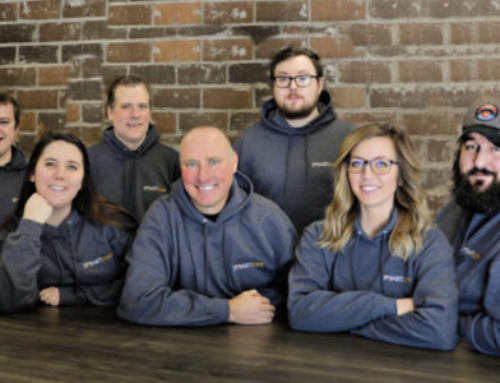
As Ph.D. students at the University of Wisconsin-Madison, Reed and his classmates Micah Erickson and Dan Ludois began work on creating the “lightest, most reliable, energy and cost-efficient electric motors and non-contact power transfer devices on the market today” with their company C-Motive.
How did you get started as an entrepreneur?
For me, the appeal of doing a startup, it’s like the stars came into alignment. I knew I wanted to stay in Madison and there’s not a lot of power engineering jobs in Madison with the very few companies here. So this was one way that I could stay in Madison and make my job, or collectively make our own jobs. We ended up getting the attention of Wisconsin Alumni Research Foundation (WARF). They led our seed round and we just built up momentum and thought, “Why not?” And like a Ph.D., there’s never a “good time” to embark on a big journey like this, but if you’re going to do it, now is the time. So we decided to take the plunge.
When did you form C-Motive and what resources did you use to get it going?
In a way we were a spinoff of UW-Madison. We were all Ph.D. students, back in 2011 or so. We came up with the idea on our own outside the university, and we thought it was really cool. Instead of patenting it ourselves we took it to WARF and they actually did the patenting. Then we licensed the technology back from WARF. That opened the door to investments and our first fundraising round started. Then, when the SBIR Advance program came to be, I ended up getting in touch with Dave Linz, the director, who told us about the program and how it provides funding to help supplement your federal Small Business Innovation Research (SBIR) funding. It also offers training in the Lean Startup methodology. So obviously, there was no downside for us.
Where did the idea for C-Motive come from?
The idea of C-Motive came from a project we were tasked with at UW-Madison in graduate school. We had to find a way to locate non-functional Christmas lights in a 100-foot-long string without taking the strand apart or replacing every bulb in the strand. We ended up trying a power transfer approach that’s not really explored in modern-day engineering, which amounted to hooking up a potato chip clip wrapped in foil on the string and attaching it to a circuit we made from spare parts in our lab. Then we moved the clip up and down the string and were able to locate the lights while still in the assignment parameters. So, instead of transferring electricity the normal way through a wire, we tapped in to nature’s electric fields. And that sparked the idea to use the same principle on an industrial scale for motors.
You recently were awarded Phase II SBIR funding. Can you tell me more about that process? What will you use the funding for?
The Phase II process started back in quarter three and quarter four of 2014. We got assistance through SBIR Advance to help us with part of the information, and then we also pulled in a lot of resources from places and we had grant writers and accountants, allowing us to focus on budgeting. We put plenty of work into it, especially into the commercialization plan, and that’s where the SBIR Advance funding came into play. We submitted the proposal at the end of January and it was under review for seven months. When we heard back, we went through an audit of budgeting and various aspects of the proposal, and then finally, at the end of seven months we got the green light.
The funding, now that we have the first chunk of it, is going to be used for developing our C-Machine Capacitive Motor into an actual prototype. What we had before was proofs of concept and principle that show the scientific principles that we’re using are valid and they do work, but it’s not exactly practical yet. At the end of the Phase II, which lasts about two years, we’ll have a prototype that is ready to go into someone else’s equipment — meaning a strategic partner that we outlined in our Phase II proposal.
Why do you think your business model would be successful in the marketplace?
We thought it would be successful because it’s a radical change from anything else out there. No one is doing what we’re doing. And the big players in electric machinery are extremely resistant to change. All the advances are incremental; all these companies make very, very small changes. But, the overall approach is the same. Everyone is doing the exact same thing. So we’re the only ones who can deliver a radical change as far as different materials. One of the major value propositions of our motor is that it’s extremely lightweight. That’s why we believe it can be successful.
Who are your key customers and where do you see growth opportunities?
We’re still pursuing the market that we identified through SBIR Advance, which is a pivot from the large wind turbine market that we had initially explored. And we’re still in the early stage of research and development so we’re looking for new applications and other markets as well.
What has been the biggest challenge for your team? What advice would you give entrepreneurs to help with similar challenges?
One of our biggest challenges is that the hardware we’re working with requires significantly more capital to try out new things. We’ve been at this for a few years and we’re still very good at seeing how far we can stretch a dollar. But as entrepreneurs, always trying to find the balance between doing things less expensively if we make it ourselves and paying someone else who’s going to take longer and cost more money. We’re always balancing this give and take. And that’s been challenging for us.
My advice would be that if you’ve got an idea, try hard to use resources and time as effectively as possible. Ferret out the biggest risks and reduce this risk as much as possible — ideally before you take on anyone else’s money because once that happens, then the clock is ticking and it’s more challenging.












FOLLOW US